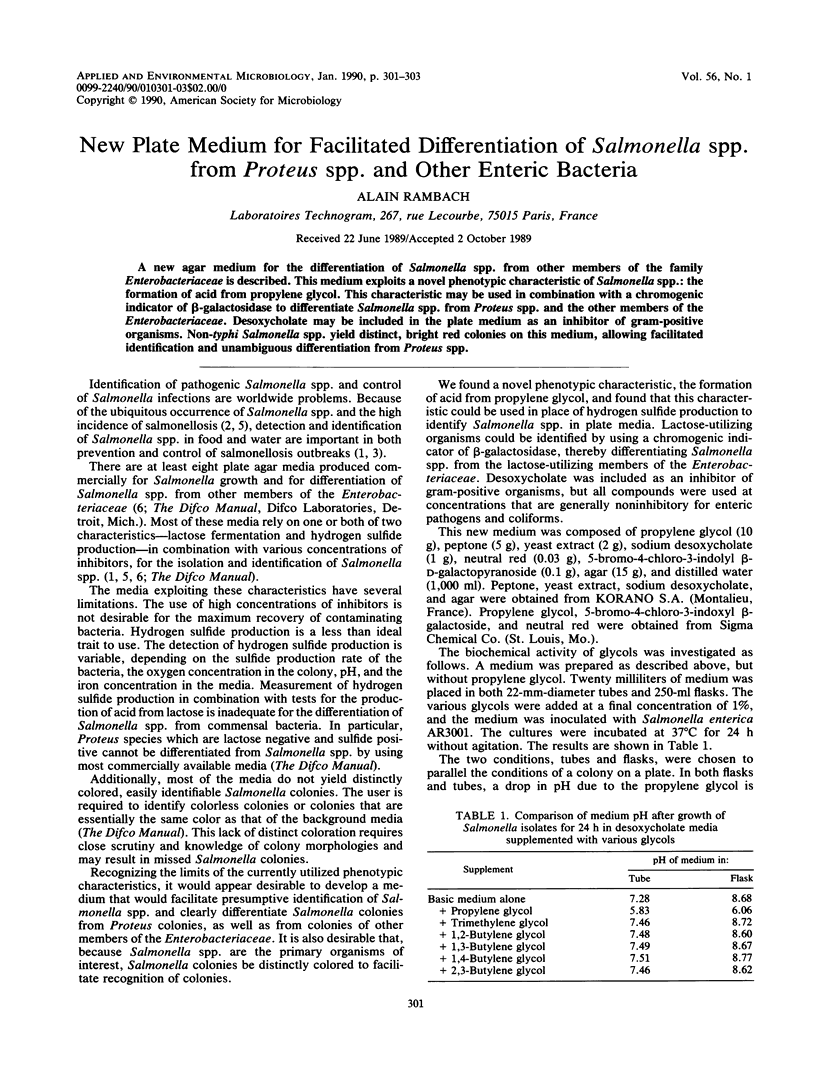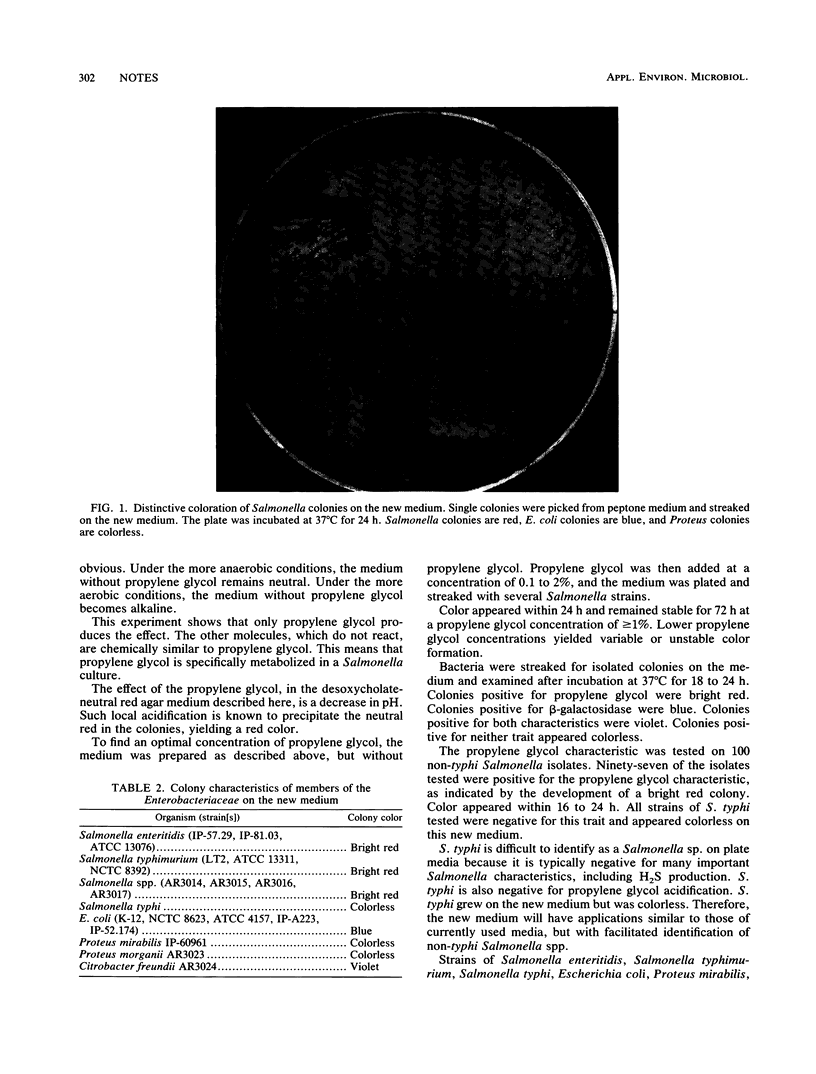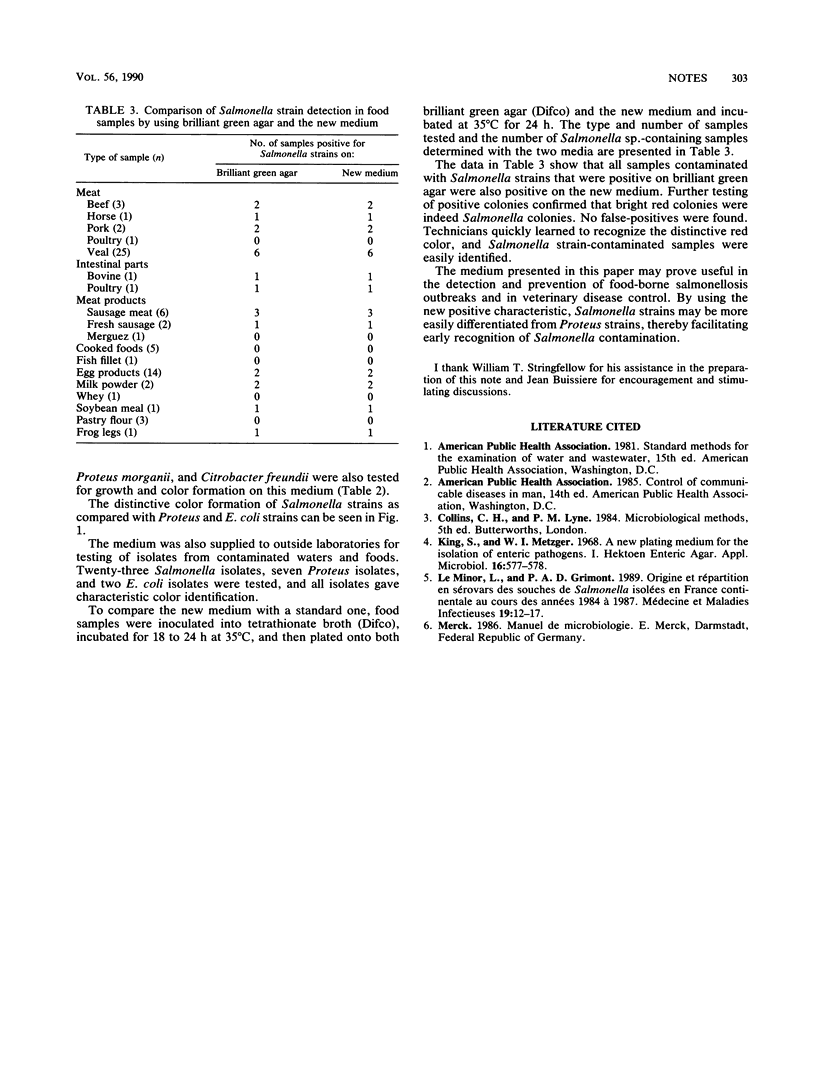Abstract
A new agar medium for the differentiation of Salmonella spp. from other members of the family Enterobacteriaceae is described. This medium exploits a novel phenotypic characteristic of Salmonella spp.: the formation of acid from propylene glycol. This characteristic may be used in combination with a chromogenic indicator of beta-galactosidase to differentiate Salmonella spp. from Proteus spp. and the other members of the Enterobacteriaceae. Desoxycholate may be included in the plate medium as an inhibitor of gram-positive organisms. Non-typhi Salmonella spp. yield distinct, bright red colonies on this medium, allowing facilitated identification and unambiguous differentiation from Proteus spp.
Full text
PDF


Images in this article
Selected References
These references are in PubMed. This may not be the complete list of references from this article.
- King S., Metzger W. I. A new plating medium for the isolation of enteric pathogens. I. hektoen enteric agar. Appl Microbiol. 1968 Apr;16(4):577–578. doi: 10.1128/am.16.4.577-578.1968. [DOI] [PMC free article] [PubMed] [Google Scholar]



